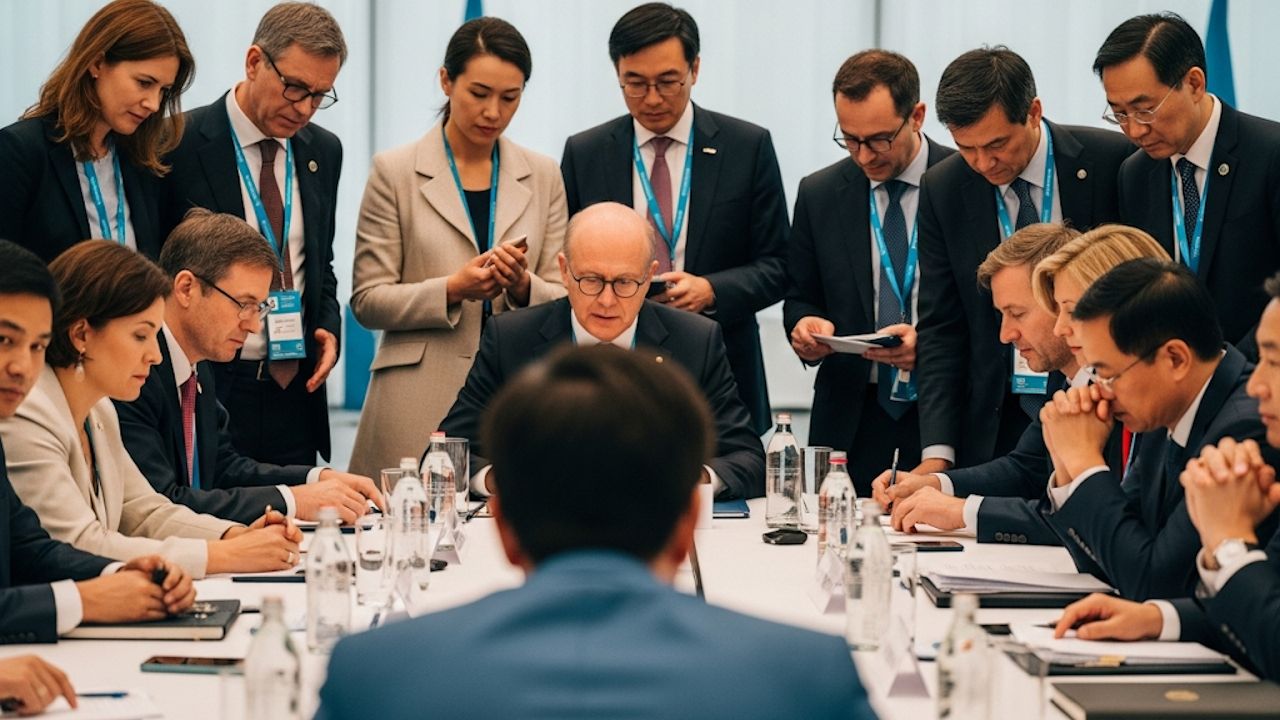The global climate crisis continues to intensify, and 2030 has become a critical milestone. The 2015 Paris Agreement set an ambitious target: limiting global warming to well below 2°C above pre-industrial levels, ideally keeping it under 1.5°C. To achieve this, countries committed to reducing greenhouse gas emissions through nationally determined contributions (NDCs), with many setting 2030 as a benchmark year for major progress. However, as the deadline approaches, the world is not on track. Political will, economic interests, technological readiness, and geopolitical tensions all shape climate politics and will determine whether 2030 goals are met.
The Current Landscape
At the heart of climate politics is the tension between economic growth and environmental responsibility. Developed nations, with historically higher emissions, face pressure to lead decarbonization efforts while also supporting developing countries. These developing nations argue they need space to grow economically and demand financial and technological aid to pursue greener development pathways.
So far, progress has been mixed. The European Union has committed to cutting emissions by 55 percent by 2030 compared to 1990 levels and is pushing forward with aggressive legislation such as the Green Deal and carbon border adjustment mechanisms. The United States, under the Biden administration, has rejoined the Paris Agreement and passed the Inflation Reduction Act, which includes substantial funding for clean energy. Yet, domestic political divisions and court challenges have hampered implementation.
China, the world’s largest emitter, has pledged to peak emissions before 2030 and reach carbon neutrality by 2060. While it leads in renewable energy investments and electric vehicles, it also continues to build new coal-fired power plants, complicating its trajectory. India, another major emitter, has set targets for renewable energy expansion and lower emissions intensity but remains cautious about adopting absolute emission cuts.
Challenges to Meeting 2030 Goals
The gap between ambition and action is wide. According to a 2023 UN Environment Programme report, current policies are projected to result in a temperature rise of 2.5 to 2.9°C by the end of the century. To stay on a 1.5°C path, global emissions must fall by around 45 percent by 2030 from 2010 levels. However, emissions continue to rise, driven by post-pandemic recoveries, fossil fuel subsidies, and inadequate regulation.
Fossil fuel dependence remains one of the largest hurdles. In 2022 and 2023, geopolitical tensions such as the Russia-Ukraine war led to energy security concerns, prompting some countries to return to coal and other fossil fuels in the short term. These moves, though politically understandable, run counter to long-term climate goals.
Finance is another major sticking point. At COP28 in 2023, developed nations reiterated their promise to mobilize $100 billion annually for climate finance, a pledge originally made in 2009. Yet disbursement has been slow and uneven, with developing countries often receiving loans instead of grants, increasing their debt burdens. Without reliable funding, many countries cannot implement their NDCs effectively.
Positive Developments and Innovations
Despite the challenges, there are encouraging signs. The cost of renewable energy, particularly solar and wind, has plummeted, making it increasingly competitive with fossil fuels. Battery technology continues to improve, supporting the growth of electric vehicles and energy storage solutions. Some countries and cities have adopted bold policies, such as banning internal combustion engine vehicles or mandating zero-emissions buildings by specific dates.
Private sector involvement has also increased. Many multinational corporations have adopted science-based targets for emission reductions and are investing in carbon offsets, circular economy initiatives, and sustainable supply chains. Climate risk is becoming a financial concern, influencing investment decisions and shareholder activism.
Multilateral cooperation remains essential. Though the United Nations Framework Convention on Climate Change (UNFCCC) process is slow, it has facilitated a framework for accountability and transparency. Regional and bilateral agreements can also complement global action. For instance, climate cooperation between the US and China, though inconsistent, has at times helped push progress on methane reduction and technology exchange.
The Role of Public Pressure and Civil Society
Youth movements, indigenous communities, and grassroots organizations have significantly influenced climate politics. From Greta Thunberg’s school strikes to mass protests across the globe, public pressure has made climate a central issue in elections, policy debates, and corporate strategy. Litigation is becoming another powerful tool, with citizens and NGOs suing governments and corporations for climate inaction. Courts in several countries, including the Netherlands and Germany, have ruled in favor of stronger climate policies.
Media coverage and social platforms have helped spread awareness, though misinformation and climate skepticism remain obstacles. Effective communication that connects climate policy to everyday concerns such as health, jobs, and security is critical to maintaining political momentum.
Looking Ahead
Whether the world meets its 2030 climate goals remains uncertain. Current trajectories suggest it is unlikely without a significant course correction. However, the next few years are pivotal. Political leadership, international cooperation, and mobilization of finance and technology can still make a difference.
The task ahead is not only technical but fundamentally political. It requires vision, compromise, and long-term thinking, often in contrast with short-term electoral cycles and entrenched interests. Still, the consequences of failure are clear: more severe weather events, biodiversity loss, food insecurity, and displacement.
In conclusion, while progress toward 2030 climate goals is lagging, the tools and knowledge needed to change course do exist. Whether political actors have the courage and foresight to use them remains the central question. The climate clock is ticking, and 2030 will be a defining moment in humanity’s response to a rapidly warming planet.

